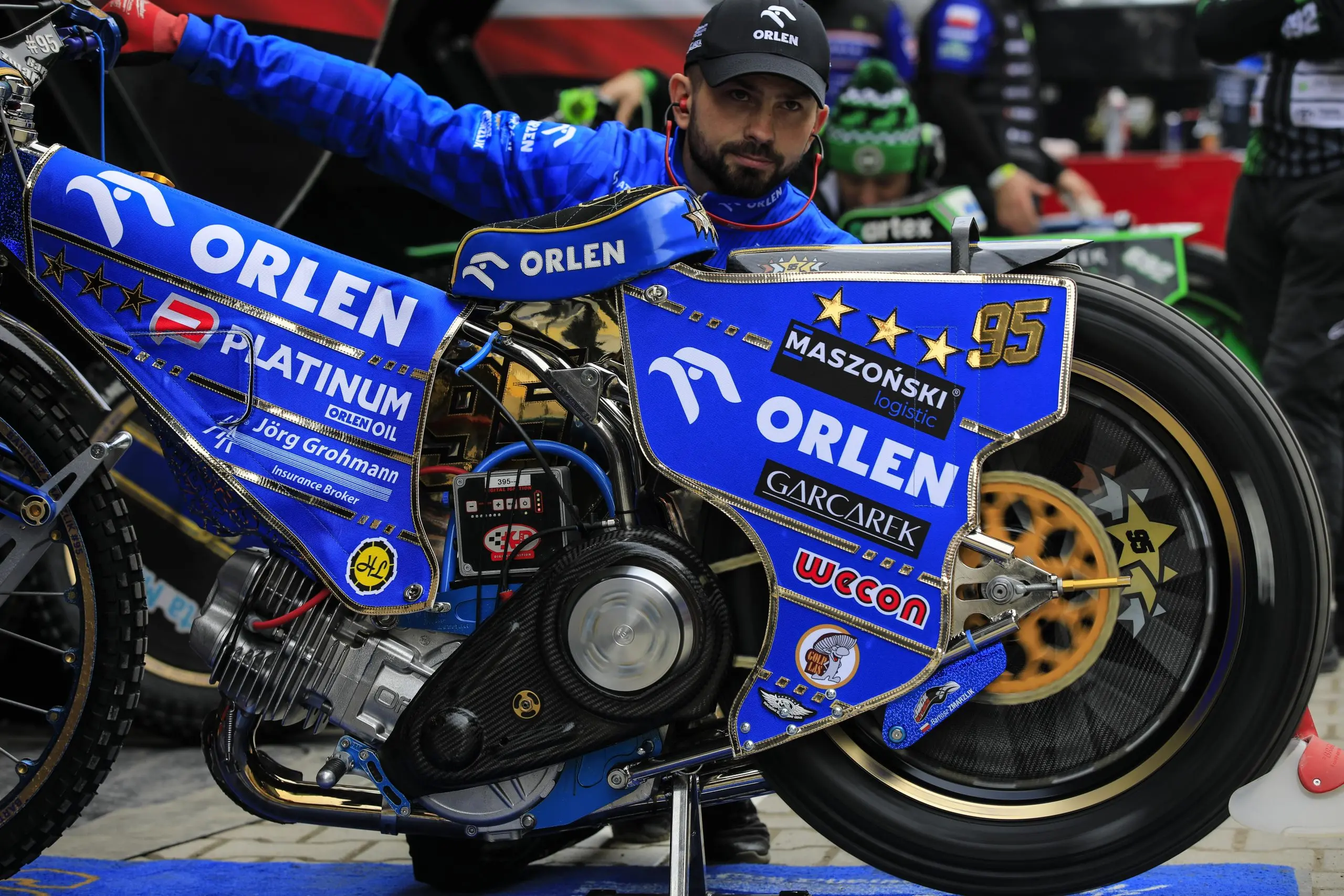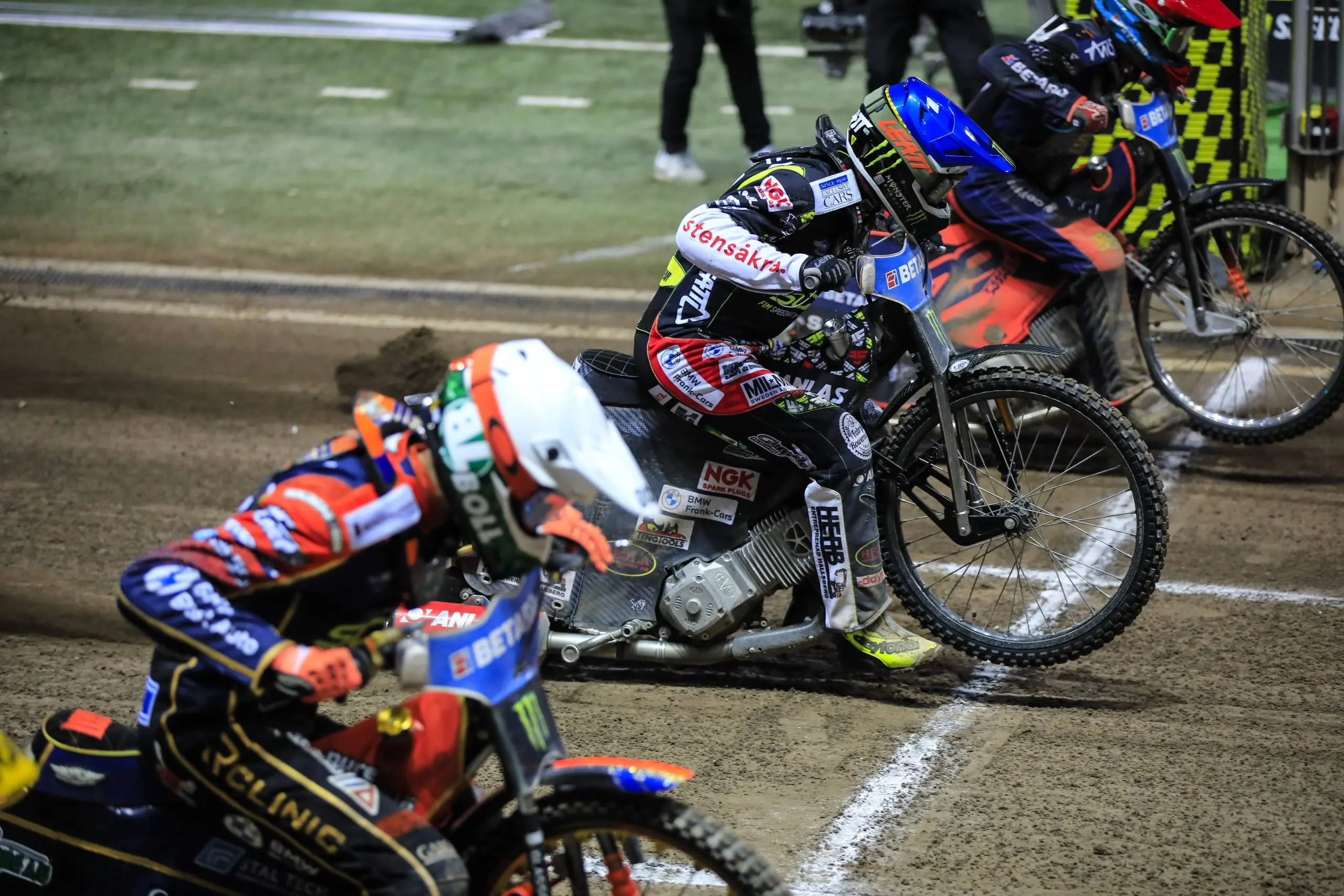SGP2
Championships rules
SGP format - The basics
- Every FIM Speedway Grand Prix round features 16 riders, racing each other over 20 high-intensity heats.
- Each heat features four riders taking four laps of the track – with all the action crammed into around ONE MINUTE.
- The winning rider in each heat scores three race points, with two for second place, one for third and zero points for last place, being disqualified or failing to finish.
- The eight riders with the most race points progress to the semi-finals.
- The riders placed first and second in each semi make it through to the final.
- The winner of the final is the FIM Speedway Grand Prix winner.
- SGP2 events follow the same 23-heat racing format as Speedway GP, with semi-finals and finals. SGP3 and SGP4 events are contested over a straight 20 heats, with the highest-scoring rider declared the winner and no semis or final.
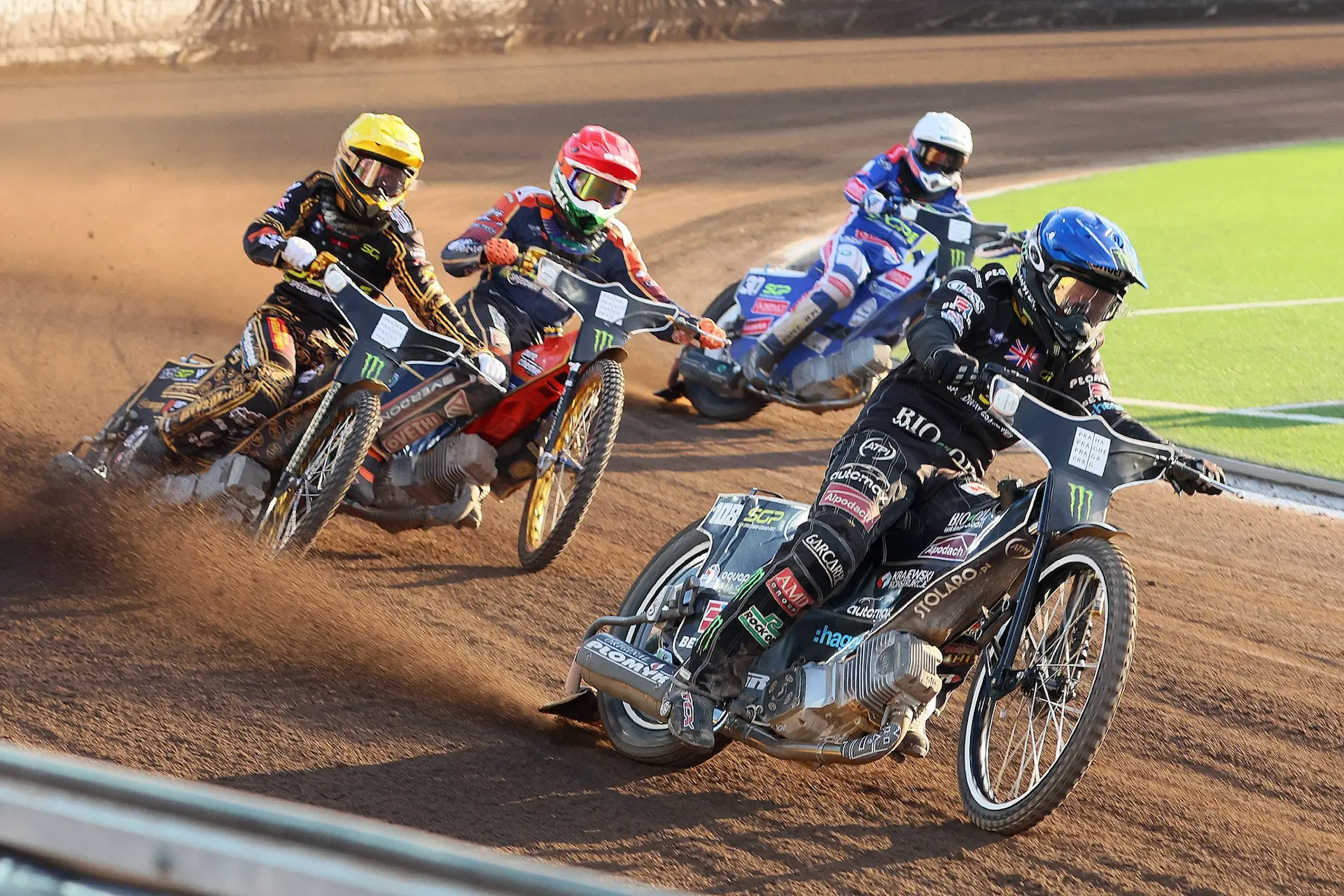
Championship format
- The winning rider at a Speedway GP event earns the top prize of 20 championship points, with 18 for second, 16 for third and 14 for fourth.
- Riders are guaranteed nine championship points for reaching the semi-finals.
- The two third-placed semi-finalists earn 11 or 12, with the highest-scoring of those two riders in the first 20 heats earning 12. The fourth-placed semi-finalists score nine or 10, with the highest-scoring of those two riders in the heats handed 10.
- The riders ranked ninth and below after 20 heats are awarded championship points on a sliding scale, with eight points picked up by the rider placed ninth in the classification and one going to the rider in 16th.
- If riders are tied for a position in a Speedway GP round, the countback system is used, with the rider registering the most race wins ranked highest.
- If they are tied on race wins, seconds, then thirds and fourth places are taken into consideration – with a fourth place deemed better than a retirement or disqualification.
- If this does not resolve the tie, the rider who scored the most points in the race or races when the tied riders met is placed highest.
- If the riders are still deadlocked, the rider with the highest FIM ranking out of the tied riders is placed highest.
- The rider who scores the most FIM Speedway Grand Prix World Championship points over a season is crowned world champion.
- If at the end of the final round riders are tied on championship points for first place, a run-off for the Speedway GP World Championship will be staged.
- If riders are tied for any other positions, the rider who achieved the most Speedway GP victories over a season will be placed higher.
- If this does not resolve the tie, the number of second places over the season is considered, followed by thirds, fourths, fifth places and so on. In the event the tied riders have identical Speedway GP records, the highest-placed rider in the final round of the season will be placed highest.
- The SGP2 championship, contested over three rounds, follows the Speedway GP format. SGP3 and SGP4 are contested over a single event, with the highest-scoring rider after 20 heats declared the winner.
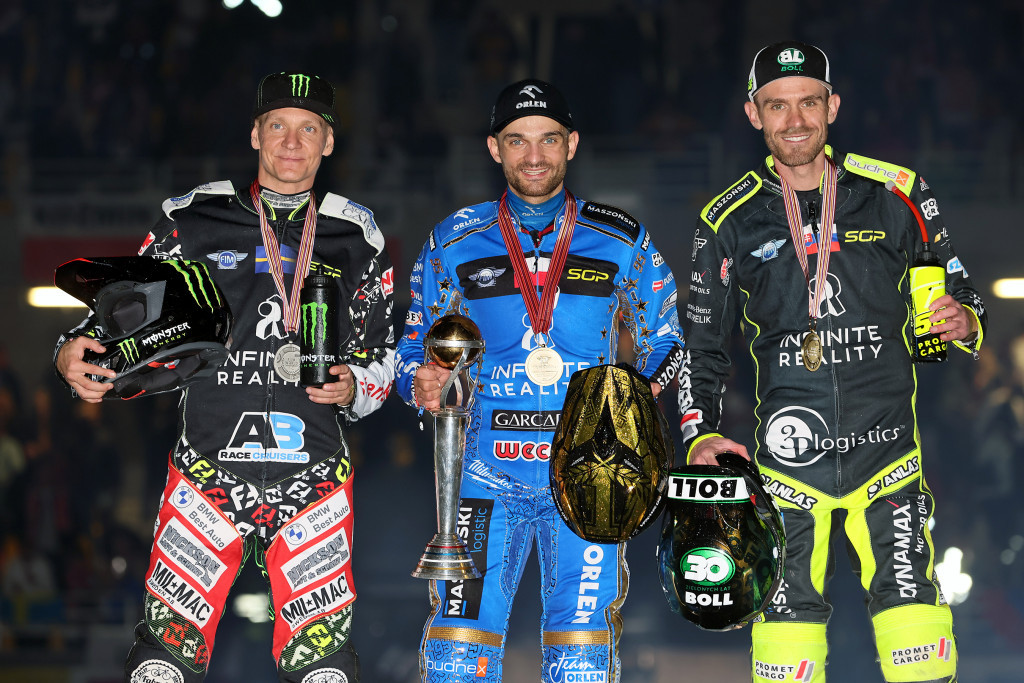
Line-up
- The top six riders in the Speedway GP World Championship earn automatic qualification for the following year’s series.
- They are joined by the top four riders from the FIM SGP Challenge – the last round of the Speedway GP qualification competition.
- The Speedway European Championship winner is also guaranteed a place in the following season’s Speedway GP series.
- The line-up is completed by four permanent wild cards selected by the SGP Commission.
- The SGP Commission also nominates a list of substitute riders, who will be called into Speedway GP events if any of the 15 permanent riders are forced out of a round due to injury, illness or other reasons.
- Every Speedway GP round also features one wild card, who completes the main 16-rider line-up.
- In addition to the main 16 riders, two track reserves are also nominated for each round. They step in if a rider is forced out of a race due to injury or illness, or after being disqualified for a starting offence.
-large.jpg)
Qualifying practice
- FIM Speedway Grand Prix Qualifying Practice will have two different formats for 2024 - with the debut of a brand-new sprint race and Speedway GP World Championship points on the line in Warsaw and Cardiff. The session will follow the 2023 format at all other events.
- Qualifying Practice at all events offers riders an opportunity to secure first choice of starting number, which allows them to select the set of starting positions they feel will suit them best for that weekend’s Speedway GP event.
- All 16 starting numbers ensure every rider starts from each of the four gates at least once. But they will start from one gate twice – and a big performance in Qualifying Practice hands them the best chance to ensure they have the right starting positions at the right time. This can be a huge advantage!
- A change for 2024 sees Qualifying Practice also take place at SGP2 events - allowing FIM Speedway Under-21 World Championship stars to race the clock and battle for the best possible starting positions - just as they will when they reach Speedway GP. Riders in SGP3 and SGP4 events will take part in a non-competitive practice session, with their starting numbers allocated by a random FIM draw.
- Riders will take to the track in groups of four and will have two blocks of two minutes clock the fastest flying laps they can.
- In Warsaw and Cardiff, the rider in each group that records the fastest lap will earn a place in the sprint race - also known as Heat 0. The winner of this race earns four championship points with three for second place, two for third and one for fourth place.
- If the Warsaw or Cardiff Qualifying Practice session is cut short and the sprint race does not take place for any reason, no additional Speedway GP World Championship points will be awarded for that session.
- If a sprint race is completed but a rider or riders fail to finish the heat, they are ranked according to the order they retired from or were disqualified from the race. For example, if a rider hits the starting tapes and is disqualified, they are awarded fourth place and one championship point. If a rider then retires during the re-run, they are awarded third place and two championship points.
- The sprint race winner earns first choice of starting number for the weekend's Speedway GP in Warsaw and Cardiff with the second, third and fourth-placed riders next to select. The rider who recorded the fastest lap but did not qualify for the sprint race gets fifth choice of starting positions, with the remaining riders selecting in an order determined by their fastest lap time - the rider with the slowest time chooses last.
- For the remaining Speedway GP events (not including Warsaw and Cardiff) and all three SGP2 rounds, all 16 riders compete against each other to set the fastest lap time.
- The rider who records the fastest lap over the session earns first choice of starting number for the weekend’s Speedway GP event, with the second-placed rider choosing next and the rider ranked 16th selecting last.
- If two or more riders clock the same fastest lap time, the rider whose second fastest lap time is quicker will be placed higher.
- Any riders who fail to set times will be randomly allocated starting numbers by the FIM after the riders who set times have selected.
- If Qualifying Practice cannot be staged in full with all riders given the opportunity to set times, for example due to rain, the times recorded during any completed blocks of qualifying runs will determine who earns first choice of starting numbers.
- In the event that Qualifying Practice cannot be staged at all or the first block of Qualifying Practice runs is not completed, the random FIM draw used to determine the starting order for Qualifying Practice will determine riders' starting numbers for the Speedway GP.
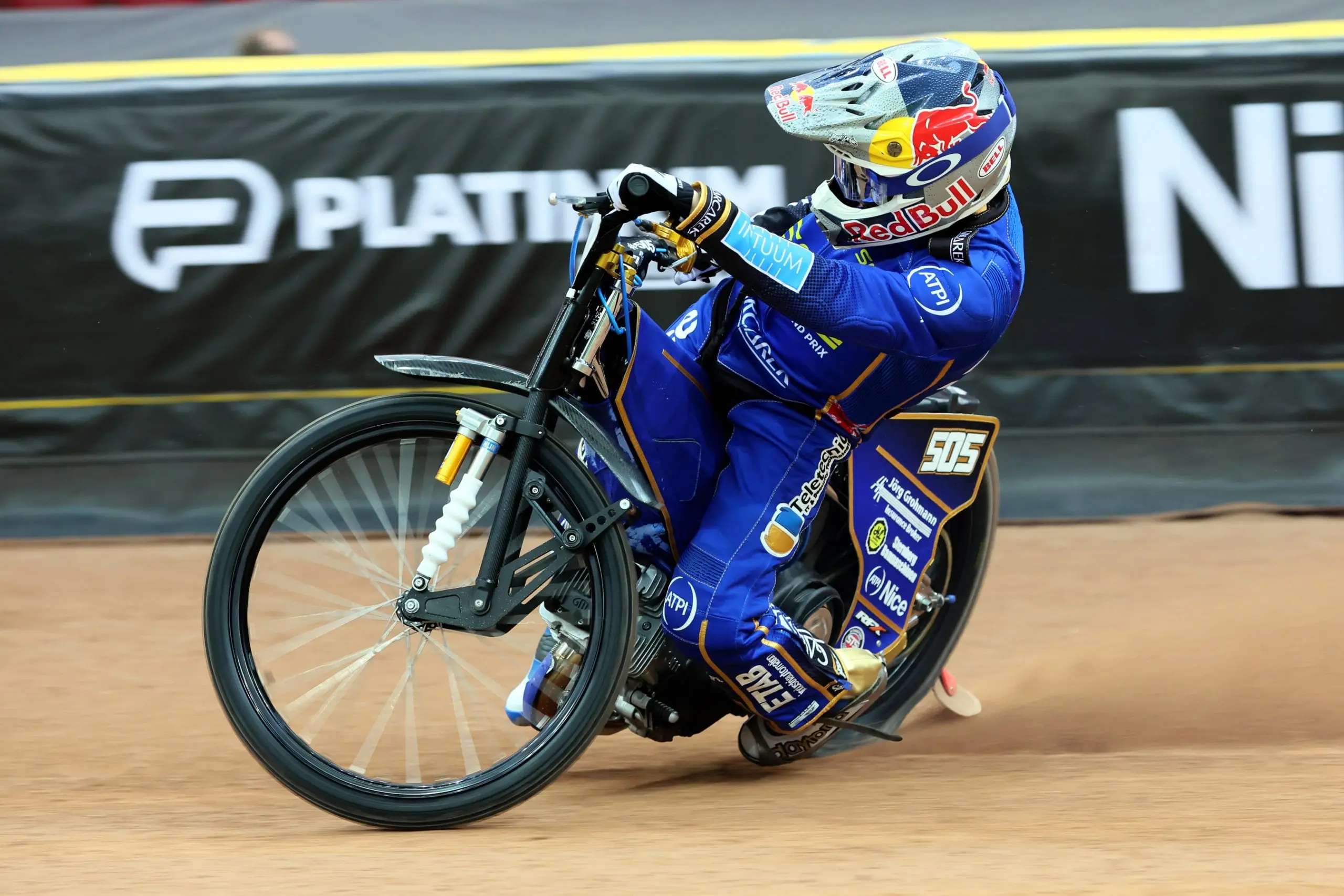
Racing rules
- Four riders line up in each race, each wearing a different helmet colour – red, blue, white or yellow. The rider in red starts on the inside in gate one, with blue starting from gate two, white on gate three and yellow lining up in gate four on the outside.
- The countdown to a race begins when the FIM referee starts the two-minute clock. At the end of this two-minute deadline, riders must be at the tapes and ready to race – otherwise they face being disqualified.
- In the event of a restart due to an unsatisfactory start, the FIM race director has the option to reduce the time allowed to one minute.
- Once the four riders have been lined up by the start marshal, the referee turns on the green light to put them under starter’s orders. The tapes will then be released by a randomised electronic system.
- If riders touch the starting tapes, they are disqualified. If a rider is adjudged by the referee to have moved before the tapes lifted, they are handed an official warning. If they move or touch the tapes again during the same Speedway GP event, they are automatically disqualified.
- When the tapes lift, an intense minute of action gets underway as four riders battle it out over four furious laps.
- If a rider or riders fall, and the race is stopped, the FIM referee will disqualify the rider they deem to have caused the stoppage. If the incident occurs on the first turn, the referee has the option to invite all of the riders back for the restart if they believe no-one was at fault.
- If a rider crosses the white inside line fully with both wheels or leaves the circuit, they are adjudged to have retired from the race – unless they left the track to take essential avoiding action (e.g. to avoid a fallen rider).
Bikes
- Unlike in other motorcycle sports, speedway bikes have NO BRAKES – riders make their turns by power sliding through the corners.
- Speedway GP and SGP2 bikes have 500cc engines and run on pure methanol – a clean-burning fuel which delivers breathtaking performance.
- Bikes accelerate off the start line faster than a Formula 1 car!
- Rear tyres could be used for as few as one or two races as teams seek that fresh edge to ensure ultimate grip off the start line. Some riders opt to use a new tyre for every heat – others use a rear tyre for two races, turning it after its first race to get a fresh edge.
- Riders can bring as many bikes as they wish to a Speedway GP round – two are placed in the pits, with any others held in a standby area near the pits. Riders usually bring three bikes.
- Every bike has one fixed gear, with teams able to change these sprockets between races in their search for speed.
- Riders and their teams can make other adjustments to the bike including changing the ignition timing, switching the carburettor jet and moving the rear wheel back or forward in a bid to increase or reduce traction to suit track conditions.
- Engine tuners also play a key role in boosting speed – servicing motors and ensuring they are fitted with parts that deliver high performance and can endure the extreme pressures they face in a speedway race.
- Motors are also fitted with rev limiters to protect the engines and increase their service life.
- For SGP3 - the FIM Speedway Youth World Championship for under-16 riders, 250cc bikes are used.
- And in the new SGP4 class - the FIM Speedway Youth World Cup for riders aged 11-13, FIM Speedway's youngest stars compete on the 190cc SGP4 bike, designed by six-time FIM Speedway world champion Tony Rickardsson. CLICK HERE for more information.
